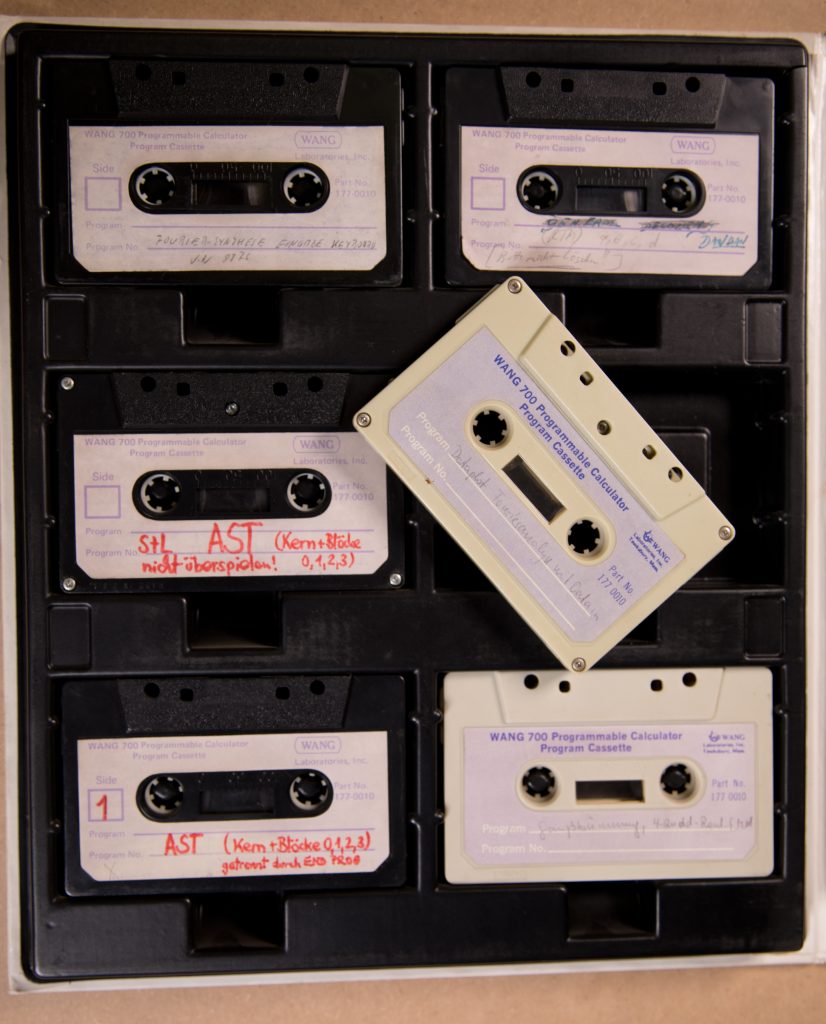Artefacts
Program cassettes
Program cassettes
This picture shows compact cassettes storing computer-readable information (programs and data) encoded as audio signals. This kind of storage was popular in home computing in the 1980s due to the relatively low cost of the compact cassette, which was mass-produced for sound recordings. The device for which the cassettes pictured here were recorded, however, is an example of earlier uses of the compact cassette—the Wang 700 Electronic Calculator was introduced as early as 1969. Computer-aided analysis and manipulation of sound requires considerable processing resources and memory, which is why it was only in 1984 that the Electronic Music Studio of the Technische Universität Berlin acquired a professional system suitable for this task, a VAX 11/780 computer costing 1.7 million deutschmarks. But as these cassettes show, simpler computing tasks related to audio and engineering could also be accomplished with an older and much smaller device.
The cassettes in these photographs bear the printed mark “Wang 700 Programmable Calculator Program Cassette” and various handwritten titles, including “Fourier-Synthese,” “Dataplot Fourieranalyse,” and “Regelkreissimulation” (“simulation of a control system”).
Wang 700 Electronic Calculator, Smithsonian National Museum of American History
© 2015 – 2025 Humboldt-Universität zu Berlin






